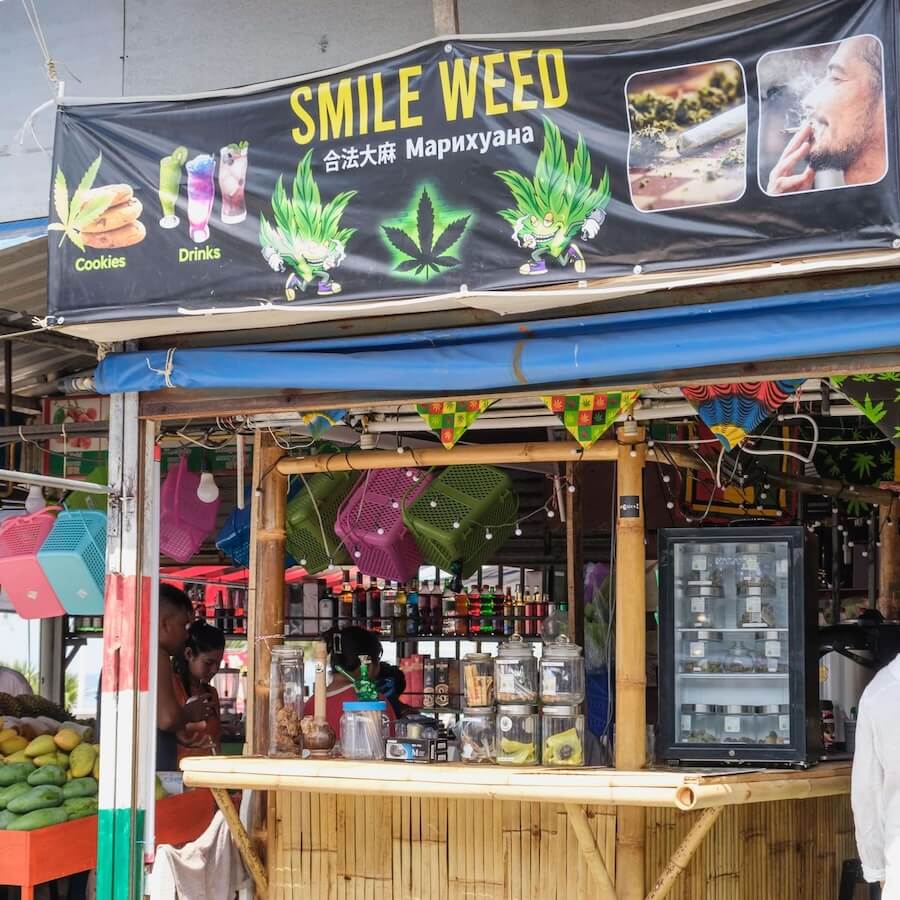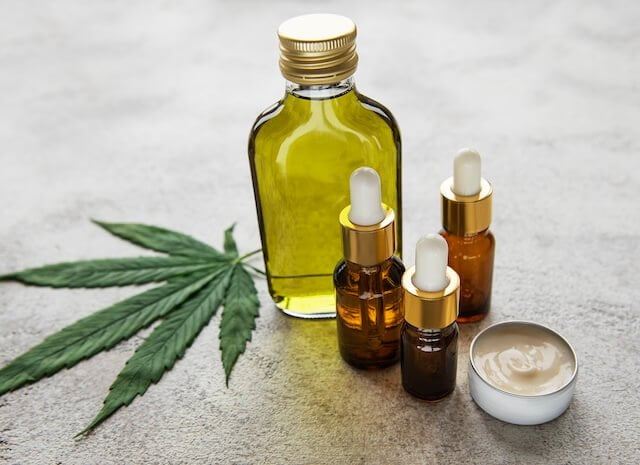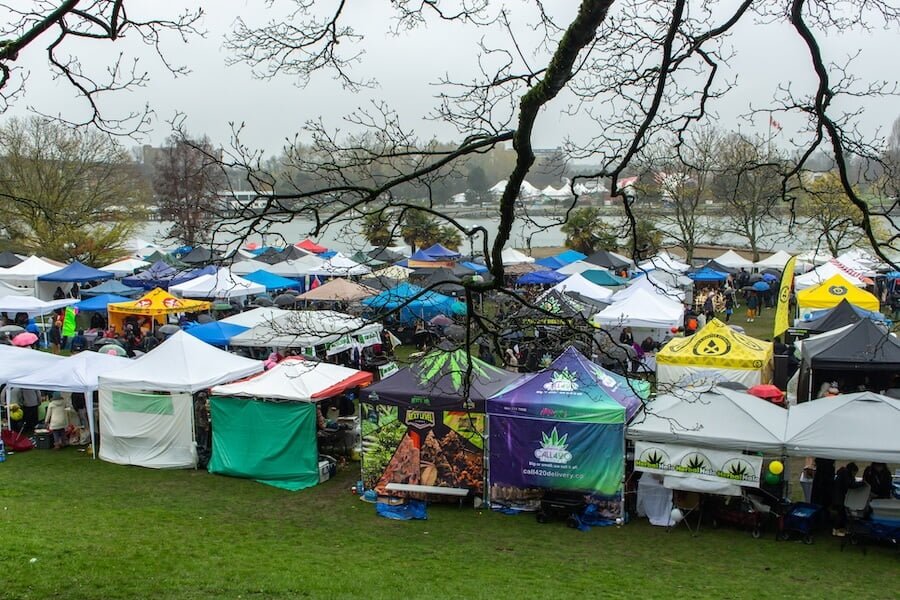These are exciting times for us cannabis enthusiasts. One might say that we are in the midst of a green rush, where more and more governments worldwide are looking for ways to legalise the plant’s use while the industry is racing ahead with new products and services.
But the situation is far from ideal. It’s no longer about just being able to smoke a joint in your house but about regulating an emerging global industry and a supply chain for a substance still illegal and stigmatised in many parts of the world. Governments must figure out a way to create an environment where people have free access to cannabis goods while reducing the influence of black markets and reversing the social harm caused by the decades-long war on drugs. It’s very complicated.
We see countries experimenting with different systems to address these issues. Some governments are trying to boost their local economies. Others are more concerned about public health, while thirds are taking a social approach, where they are trying to regulate personal use to reduce incarcerations and the burden on their justice system.
There’s also a growing debate around the creation of a state-run vs privately-owned cannabis industry.
So let’s look at how we got here, what the current state of the cannabis industry is, and what the future may hold.
This article will discuss:
What’s the current regulatory landscape of cannabis?
To date, 42 countries have legalised medical cannabis, along with 35 states in the US. Twenty-one US states have legalised it for recreational use. Around 50 countries have decriminalised some form of possession and personal use.
Two countries have fully legalised marijuana nationwide – Canada and Uruguay. In 2022, Thailand removed cannabis from its scheduled narcotics list, effectively legalising the plant. It became the first Asian country to do so. Since then, the country has been referred to as the wild west of cannabis, with many people opening marijuana dispensaries and applying for grow licenses.
The countries where cannabis is commercially available are Canada, Uruguay, Thailand, and some states in the US.
Although it’s up to each country to decide how to regulate cannabis, one international treaty provides a binding framework that navigates all of them. In 1961, the United Nations adopted the Single Convention on Narcotic Drugs. This main international treaty controls all aspects of some narcotics and introduces the drug scheduling system we all enjoy today.
If you want to know more about this topic, you can check our detailed article about The Legal Landscape of Cannabis Worldwide.
Germany and Switzerland commercial-market trials
Most recently, Germany and Switzerland introduced trial programs experimenting with the idea of a legalised commercial market.
Switzerland’s program allows certain cities to test-run strictly regulated, non-profit-oriented sales of cannabis in pharmacies. The government will investigate its health and social effects and the gathered data will be used for future cannabis legislation. This approach will serve as a sort of “recreational use for scientific purposes”.
Germany chose a two-pillar program. The first pillar is centred on home growing and personal use. The government will adopt the cannabis social clubs model used in Spain. These clubs act as non-profit organisations, allowing individuals to grow cannabis collectively for non-commercial purposes. The second stage will begin commercial trials like the ones in Switzerland.
State of the cannabis industry
Overview
The cannabis industry is still in its infancy, with the potential to become a major economic force. The burgeoning market has generated job opportunities across various sectors: cultivation, manufacturing, distribution, and retail. Additionally, tax revenues derived from cannabis sales have benefited local and state economies, supporting infrastructure development and public services.
Scientific research regarding medical applications also continues to advance. CBD and THC, the main active compounds in cannabis, have shown promise in alleviating symptoms of various conditions and have created a separate medical market.
The growing acceptance of medical cannabis has led to increased research, product innovation, and the development of pharmaceutical-grade cannabis-based medications.

The marijuana industry has also witnessed rapid advancements in cultivation techniques, extraction processes, and product development. Emerging technologies have improved quality control and plant yield. They have also stimulated the creation of various cannabis-infused products, including edibles, topicals, and concentrates.
The North American blaze
When it comes to the cannabis market, Canada and the US are blazing the trail. Although in the US, cannabis is still illegal on a federal level, the combined states where marijuana is legal represent the biggest market in the world. Canada is the second one.
The two countries have established the most comprehensive and regulated industry. Flower, edibles, cosmetics, or therapeutic products are all widely available in cannabis dispensaries, which are just like any other retail shop.
Medical cannabis is also easily accessible; all you need is a medical card. Getting one is relatively easy. With a simple visit to the doctor, most patients will walk away with a shiny medical card in hand. With it, you can head to a licensed dispensary and explore a wide selection of products. The best part? You’re not bound to pharmaceutical companies or doctors’ prescriptions. The choice of self-medication is yours to make.
Europe’s budding scene
Over in Europe, the medical marijuana industry is slowly opening up. CBD and hemp products have already taken centre stage in the UK and the European Union, focusing on treating patients rather than simply selling goods. Some countries have also decriminalised small quantities of cannabis, freeing individuals from possession penalties.
However, it’s important to note that access can vary from place to place, and marijuana laws can be a bit hazy. For instance, some countries, like the UK and Finland, have only legalised specific derivatives of the cannabis plant for medical use, excluding the plant itself or other natural forms. Additionally, European countries have to comply with international treaties.
Thailand – the new Asian frontier
For us, the most exciting development is taking place in Thailand.
June 2023 marked one year since the Thai government removed cannabis from its scheduling system, essentially allowing its use, sale, and cultivation. And of course this laid the grounds for a booming legal market. There are 1800 weed shops in Bangkok alone. The University of the Thai Chamber of Commerce estimates that the market will reach USD 1 billion by the end of the year.
Interesting fact: to track growers and gather data, the Thai government created a site and an app where people must register to apply for a grow license. On the first day, the site crashed because there were more than 9 million applications. This makes up 12% of the population! This is no surprise, considering that 1/3 of the country are farmers. Having a perfect climate, it’s probably much easier and more profitable to grow cannabis than rice.
The country is trying to position itself as an industry leader in the region. The state government aims to stimulate the local economy through industrial agriculture and cannabis tourism.
However, there are significant roadblocks. Thailand’s bold move to remove cannabis from its scheduling system was made without any regulations. This means that there are no rules regarding cannabis cultivation, production, and distribution. Businesses can do whatever they want but have no protection from the state. It’s a free-for-all. This also creates problems for consumers since they need guarantees regarding the quality and origin of the products they use.
And it gets even weirder. Thailand’s opposition party won the general election two weeks ago in a major upset. The Move Forward party plans to impose strict marijuana regulations and even considers relisting it as a controlled substance. This will throw the entire industry into shock, as businesses cannot operate in a cloud of uncertainty.

Current market projections and trends – lessons from the COVID-19 pandemic
Due to the industry’s nature and the state of cannabis regulations, market growth is difficult to predict.
Projections
Data projections estimated that the global cannabis market will grow from USD 28.266 billion in 2021 to USD 197.74 billion in 2028. This is a tremendous 34% jump year over year. This may sound like a lot, but it’s still far away from industries like alcohol, which currently stands at USD 250 billion in the US alone. Additionally, the market hides many surprises.
Although the cannabis industry emerged as a winner from the COVID-19 epidemic, due to regulatory and economic challenges, 2022 showed slowing market growth and a decline in legal cannabis sales. Layoffs, cash crunches, and increased debt hit numerous companies across the sector.
Projections from 2022 were much more conservative, reducing the growth of the global market size by more than half. The data valued it at USD 27.7 billion in 2022 and expected it to reach USD 82.3 billion by 2027.
This only shows the dynamic environment businesses must operate in and the need for certainty in the industry.
Trends
In terms of products, the most considerable uptick was observed in the tinctures and sublingual category (stuff you put under the tongue), followed by cannabis beverages. The consumption of raw cannabis flower has been in decline. A significant shift in public perception might explain this. People now think of cannabis as a therapeutic medicine rather than just something stoners do to get high. This was most evident during the COVID-19 pandemic. People’s focus concentrated on mental health and general well-being, and they started turning to marijuana for help.
In the USA, despite being illegal on a federal level, many states where the plant is legal classified cannabis dispensaries as essential services on the same level as pharmacies and hospitals.
Amid lockdowns and the suffering from COVID-19, legal cannabis sales grew 46% during 2020, hitting USD 17.5 billion.
Gen Z consumers
Gen Z consumers (those born after 1997) witnessed the most rapid growth during the pandemic. One of the main drivers behind this growth is the fact that many Gen Z individuals turned 21, the legal age for purchasing cannabis. Additionally, the destigmatisation of cannabis has played a role. Some young consumers grew up in states where adult recreational cannabis is legal, making them more comfortable and accepting.
At the same time, the consumer base is changing too. Women customers have been increasing steadily for the past few years. Currently, Gen Z women are the fastest-growing consumers of legal cannabis.

This younger consumer/patient base is also more educated. With increasing product variety, people’s desires are evolving. The latest trend focuses on aesthetically pleasing, well-designed packaging and clear, regulated information labels. People now seek products with lab-tested ingredients, standardised dosing, and modern branding.
Customers are also more socially involved and are interested in sustainable growing practices, like organic supplements and pesticides. The days when people got whatever weed they could from the back-alley guy in a hoody are fading away.
There are environmental concerns, social impact, and efforts to include marginalised groups. Because of cannabis’s history of mass incarcerations, prosecutions and inequality, people desire a new business approach. One that combines capitalist values with social equity. Because of this, businesses will need to make an effort to connect with their base meaningfully and consistently while still making money.
Big Businesses
Getting involved in the legal sector requires a lot of money, especially compared to other food-related businesses. The high cost makes it difficult for lower-income individuals, who may have been involved in selling cannabis for years, to participate in the legal market.
Big companies are trying to enter this space, as it is easier for them to invest and get funding. They can also buy out other companies to expand their product portfolio. This raises concerns since Big Business has always been tied to lobbying efforts, unlawful practices, hyperproduction, dehumanisation of the consumer and unfair competition.
Essentially, they’re taking away the plant’s spirit and using it for profits. Large national brands and producers with economies of scale will win. The small producer and retailers will only lose with no laws protecting them from competition.
Cannabis markets
So now that we have an idea about the current situation regarding legalisation and where the markets are heading, let’s dive in a little deeper into the specific niches shaping the industry.
Food and beverages
The current legal cannabis-infused food and beverages market offers an impressive range of products. Items such as candy, confectionery, cookies, salty snacks, and culinary and cooking staples are becoming very popular. The edibles segment is taking the lead, surpassing traditional cannabis flower sales.
However, proper dosage is one of the main challenges in creating new products. Edibles are much more potent, and a THC high takes longer to pass. A difference between 5 and 10 mg can be massive, especially for newbies.
There’s a preference shift among younger millennials and Generation Z, as they increasingly favour cannabis products over alcohol. New Frontier Data’s survey revealed that 69% of participants aged 18 to 24 prefer marijuana. Interestingly, consumers up to the age of 44 also display a similar tendency.
A THC and CBD-infused beverage industry already offers a selection of sodas and seltzers. These products view themselves as competitors to mixed drinks, beer and wine. On top of the sweet taste, the refreshing qualities, and the fact that they get you high, these drinks also offer effective stress relief and reduction in anxiety. In an interesting twist, cannabis innovators might use that to market the beverages as wellness products rather than cannabis products.
No doubt, as the market expands, Big Alcohol will have something to say. Companies like Heineken are already looking into ways to develop their own line of cannabis-infused products.
Cosmetics
There’s a growing interest in minor cannabinoids like CBG and CBC because they offer similar benefits to CBD.
However, CBD remains the biggest player in this sector due to its various benefits. You’ll find brands that provide CBD-infused face creams everywhere these days. There are also many moisturising and lip care products with antibacterial properties and antioxidants to repair damaged tissues and sore and chapped lips. They can even help with inflammation from cold sores.

Cannabis is making its way into makeup too. Take mascara, for example. Most people don’t realise that traditional mascaras use beeswax, but cannabis can step in as a vegan-friendly alternative. Plus, since it’s an oil, it can serve as a conditioner and has shown potential for promoting hair growth.
Medicine and therapeutics
One of the main challenges in this sector is finding effective ways to deliver active compounds. Smoking is not the healthiest option, and getting consistent doses takes a lot of work. On top of that, these medicines don’t dissolve easily and have low bioavailability, making it tricky to create reliable oral formulas.
That’s why scientists and pharmaceutical companies are exploring new delivery methods, like sprays under the tongue. These formulations get absorbed through the membranes in your mouth, so they quickly enter your bloodstream and start doing their thing.
Nanotechnology is another exciting way used to deliver cannabis-based medicines. A fancy study from 2021 found that tiny nanocarriers can deliver CBD to your eyes, which could be great for treating eye conditions. Some companies even test nanoencapsulation techniques to see if CBD can help with opioid dependence.
And have you heard of transdermal patches? You stick them on your skin just like a nicotine patch, and they slowly release their active compounds over time, keeping your cannabinoid levels nice and steady.
Developing better ways to deliver cannabis-based medicines is a hot area of research, and it has enormous potential for future treatments.
Cannabis tourism
Some estimates value cannabis tourism as a USD 17 billion industry waiting to take off.
According to Forbes, out of the USD 25 billion generated from legal cannabis sales in 2021, an estimated USD 4.5 billion can be attributed to tourism. Tourists also spend approximately USD 12.6 billion in various sectors, such as restaurants, hotels, attractions, and other local businesses. Moreover, these activities generate substantial tax revenue for the states and municipalities. This economic boost is due to a multiplier effect, wherein every dollar spent at a cannabis retailer results in an additional injection of USD into the local economy.
An emerging trend in the US states where cannabis is legal is the so-called cannabis consumption lounges (CCLs). They follow the legacy of the speakeasies during the Prohibition years of the 20th century. These places served as underground alcohol refuges where people could socialise and safely drink liquor. Today, cannabis or social consumption lounges serve the same purpose but are legal and regulated. You can just chill and smoke a joint in a comfortable social setting.
These CCLs are gaining interest because legal cannabis doesn’t mean you can smoke it in public. Consumption differs from possession and has its own set of rules.
In addition, landlords can ban smoking in apartment buildings, making it even harder for you to enjoy your bud. CCLs provide an alternative to that.
We are talking about cannabis tours, restaurants and cannabis resorts
This is another exciting sector for us stoners. We hope countries will soon cater individually to the cannabis tourist with specific activities. Currently, the most famous destination might be Amsterdam. However, the government has been pushing back in recent years against foreigners being able to buy and smoke weed recreationally.
In Colorado and California, there are cannabis restaurants that infuse their menu with marijuana. They also provide cannabis pairings, just like other restaurants offer wine pairings. Of course, these restaurants will have cannabis chefs trained explicitly in using ganja as a food ingredient.
Another exciting side is cannabis festivals. Not long ago, living boxing legend and heavyweight stoner, Mike Tyson organised a cannabis-friendly festival at his Tyson Ranch – a 412-acre cannabis resort being developed in California. The thought of being able to smoke a joint with Mike Tyson at a weed festival makes us want to contact our local representative and demand cannabis reforms.

Various expos, conferences and forums worldwide also offer a great networking platform for cannabis aficionados. People can show their businesses, learn about new products and services, visit a thematic lecture or enjoy themselves at a concert or a party, surrounded by like-minded individuals.
Still, a patchwork of complicated laws and regulations regarding recreational use by tourists leaves questions about how you can use and transport cannabis products overseas. It also raises issues with traveller’s insurance and health care.
Emerging products, services and technologies
The cannabis industry offers a vast potential for new products, services and technologies.
Looking ahead, people are working on new ways to synthesise cannabinoids and new cannabinoid products.
Cannabinoid biosynthesis
Most cannabis growers use traditional means to extract the cannabinoids from the buds, but one drawback is that it can get expensive since the process is not easy, which drives up the cost of the end product.
This is where cannabinoid biosynthesis comes in. It is an innovation that enables producers to create cannabinoids like THC and CBD in a more cost-efficient manner. Essentially, this technology uses microorganisms to develop yeast strains that produce cannabinoids.
No doubt the new delivery methods will change our food habits too.
Soon, we envision various new cannabis-infused food products like condiments, sauces or cannabutter that can be used in cooking. Of course, people have been experimenting with these for centuries but have yet to become part of a regulated industry.
Together with the edibles niche, these products might lead to the creation of an entirely new industry. One that combines food with therapeutics. The implications are massive, and the thought makes our heads spin. We imagine someday soon to be able to home cook a meal that also heals or treats symptoms. Crazy!
Craft cannabis and mom-and-pop stores
As big businesses continue to take over, we see craft cannabis as one potential avenue where mom-and-pop stores could exist. It refers to small-scale growth that concentrates on quality rather than quantity. This will allow retail stores to grow their own weed or work with small-time farmers to provide innovative products that cater to responsible consumers.
Cannabis-related tools and services
As marijuana regulation evolves, there will be high demand for tools and services that help businesses navigate the complicated world of cannabis. Insurance plans, tax laws navigation, business management assistants such as HR and payroll, CRM (customer relation management) programs, transportation and logistics will create a vital ecosystem for ganja entrepreneurs.
The evolution of cannabis growing techniques
The industry standard, especially for medical marijuana, is indoor growing. This, however, gets expensive. Considering the real estate costs, massive energy bills, and significant staffing requirements, finding a way to increase profits is crucial. Maximising the grow space is an ongoing process, especially in a developing industry.
The main challenges are always space management and optimisation of the growing conditions.
Vertical farming is a boon for those that can’t afford large spaces. In addition, it offers more yield in limited spaces, making it perfect for anyone to grow cannabis. It essentially involves cultivation in vertically stacked layers.
This method is especially suited for aeroponic systems. Essentially, an aeroponic system is a closed environment where the plant’s roots are suspended in a chamber, repeatedly sprayed with a mist of nutrient-rich water. The solution is delivered to the roots via an atomiser. This lets you control the environment precisely, allowing your plant to grow faster and yield better.
Aeroponics also doesn’t waste as much water or nutrients and you don’t have to invest resources in maintaining a growth medium (soil).
Outdoor growing
Eventually, the industry will need to incorporate outdoor cannabis growing as well. In the recreational space, farmers have been producing sun-grown cannabis for decades. However, they didn’t have to comply with state regulations or international standards since they primarily operated illegally. This is especially true for medical cannabis, which requires strict monitoring and quality control from seed to bud.
Commercial outdoor setups are also more suitable for less developed countries that want to enter the cannabis space. Countries in Africa and Southeast Asia, where the climate is ideal for cannabis, will begin adapting their outside conditions to the industry simply because it’s much more affordable, and easier to set up and maintain.

Automation, Artificial intelligence and machine learning
Emerging technologies are another big part of this sector. Cultivators are always trying new methods to help them create high-quality products while improving their bottom line. This involves various tracking tools, controls, sensors, and devices that analyse the plant’s growth and performance at every stage of its lifecycle.
Automation, Artificial intelligence (AI) and machine learning will play a significant role in the coming years. The grow process will be less reliant on humans and thus less prone to human error. Automatic systems will irrigate, and provide nutrients and light to the plants. They’ll also adjust the temperature and the humidity.
Same as industries like packaging and assembly, robotics and automation can perform tedious, repetitive tasks consistently and accurately, reducing the grower’s burden and effort.
At the same time, AI systems through machine learning will analyse data from cameras and sensors, offering immediate feedback. The systems will be able to make predictions regarding cultivation. By checking historical data associated with plant yields and growth, AI algorithms will offer cultivators insights that enable them to take better care of their buds.
Artificial Intelligence can also be used to develop new marijuana strains. It analyses a plant’s genetic makeup and identifies desirable traits, much like a breeder, to create much more potent, resilient, and flavorful strains. This also helps breeders conduct better research and achieve their goals faster.
Cannabis industry’s challenges and opportunities
As we’ve already discussed, regulation is a crucial word in the cannabis world, nationally and internationally. It’s the main problem that needs to be addressed.
However, institutions must also figure out how to connect cannabis businesses with the banking system and set fair taxes. The primary issue is that banks don’t want to work with them because they fear prosecution. So, people are forced to operate on an all-cash basis, dealing with stacks of paper bills. This only adds fuel to the black market fire.
There’s some development in this regard. The US administration is currently working on the Secure and Fair Enforcement (SAFE) Banking Act, which will allow cannabis businesses to use banking services. That’ll be a massive step in the right direction. Hopefully, when implemented, it will be used by other governments as a blueprint for their programs.
Plus, they have to reduce the black market’s influence and ensure everyone gets a fair chance in the industry by integrating minorities, people in jail, and those legacy farmers who’ve been growing cannabis since before it was legal. This means reversing wrongful convictions for cannabis-related offences and looking at decades of government propaganda.

They also need to work on improving public perception and educating the population.
Eventually, like any other industry, cannabis will find its place in society. Once people have experimented with different options and the initial hype dies down, consumption habits will settle.
Currently, it’s important to help governments decide how to approach it. Will marijuana be used casually, like a beer after work? Or will it be seen as a dietary supplement or a treatment?
Conclusion
We are in the midst of a green rush where more and more governments worldwide are looking for ways to regulate cannabis use and become a significant player in an emerging global industry.
The biggest and most developed cannabis market is in North America, while Europe is slowly gaining speed. An interesting new development occurred last year in Thailand when the country became the first in Asia to legalise marijuana. Since then, there has been a boom in cannabis shops and growing licenses.
The marijuana industry is still in its infancy, and businesses are racing ahead with new cannabis products and services. From foods and beverages, cosmetics and therapeutics to tourism and growing techniques.
Although there’s much enthusiasm, major challenges still need to be addressed. Governments have to solve the puzzle of local and international regulations. They need to allow banks to work with cannabis businesses, provide insurance and reverse the damage being done by a decades-long war on drugs.
In this environment, we are not just bystanders. Our role is essential since consumer desires drive businesses, and through elections and civil participation, we choose the path our governments take.
So be a responsible consumer, know your rights and arm yourselves with patience because good times are lying ahead!






Leave a Reply